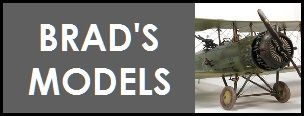Described generically as an all-purpose reconnaissance biplane the Rumpler Werke AG’s C.IV was the development of its earlier C.I - III machines. It came to be used as a high altitude long range reconnaissance machine. The first operational examples arrived for dispersal at Armee Flug depots in February and March 1917. Initially there was a noted weakness in the rear and front of the long fuselage. This was reinforced with plywood veneer panels and thicker struts. Two types of engines were factory installed at 245 - 260hp. In the end 1151 airframes of the C.IV were manufactured through July1918. Typical war load equipment included radio transmitter, bombs, electrical wiring for heating flight suits, Parabellum machine gun drums, various cameras, liquid oxygen cells and bladders. By July 1917 the C.IV was regarded widely in the Fliegertruppe as the best performing C type. Yet she was known as a handful to fly and not the meat for less experienced crews. The common theme of performance reports read, “...she could stall in turns very easily but in a shallow dive or climb there was nothing faster...” Eventually she became the backbone, ribs, and legs of the two-seater operations. Aircraft began being assigned specific designations for the engine and permanent equipment assigned to the airframe. The Rumpler C.IV - IX were look-alike aircraft with specific operation capabilities. The remaining kissing cousins were sold to fledgling air forces and wore many and varied national markings. All total there were about 2201 airframes.

An elegant profile makes this kit a real joy to have on your shelves. As far back as February 1975 when a conversion article appeared in the old “Scale Models” magazine, this kit has been envisioned. Concerning 1/48 scale it was the late 1990's that Jager, the Scotland based resin kit manufacturer produced a 1/48 scale kit of the Rumpler C.IV. It was beautiful but cost a hard $75.00 USD. Jager closed its doors in 2003 and we believed that these kits were just a memory. Yet in 2006 Planet Models announced their contribution of a Rumpler C.IV in1/48. It is definitely a new mold and extremely well detailed. Its cost is roughly $53.07 USD.. This review will deal with the Planet Models kit. As it is mostly resin these parts will be referred to as RP. Plastic parts are referred to as PX. Though the instructions clearly label them as photoetch the PX items are in fact resin too. Originally the parts marked PX were supposed to be white metal.








































